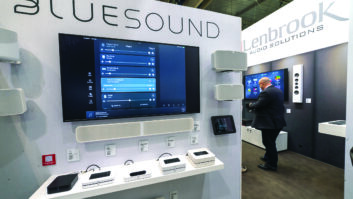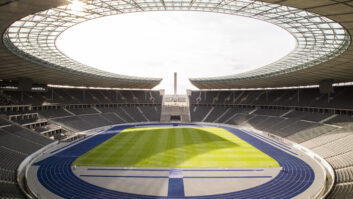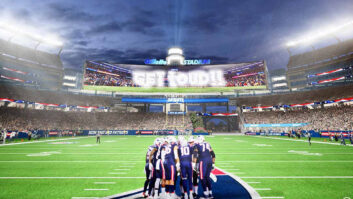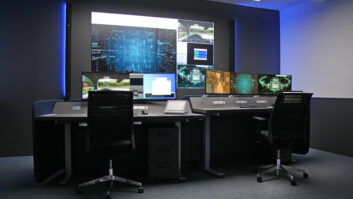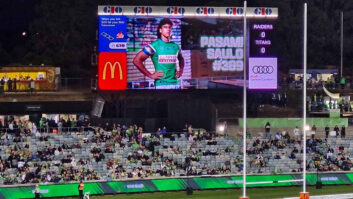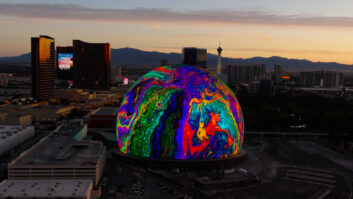Globally, a new generation of stadiums is fast becoming a symbol of the cultural and economic outlook of a city and country. Consequently planners, architects and politicians are increasingly aware of the social and economic benefits of stadium schemes built close to city centres. These venues represent the latest in technologically advanced buildings designed to serve the community.
Sport has traditionally been resilient to economic cycles. UEFA’s award of its Euro 2012 Football Championship to co-hosts Poland and Ukraine has heralded a new era of stadium construction in both nations, with six major schemes under way in each country. Likewise, in Lithuania five new arenas have been built in preparation for the country’s hosting of the 2011 European Basketball Championship.
Equally strong growth can be seen in Dubai. After more than three years and $100 million, the 25,000-seat cricket stadium at Dubai Sports City opened in April, the first of four stadiums to be completed. The plans also include a 60,000-capacity multipurpose stadium and a 10,000-capacity indoor arena.
With demand for sport on the increase, many teams, especially in football, now have their own TV channels, thus driving the need for networking technology and enhanced facilities, such as large screens and better sound from PA systems. As completion of new stadiums for the South African 2010 Football World Cup draws close and with the London 2012 Olympics looming large, is confidence spreading to the AV companies working in the stadium and arena sectors?
Financial implications
In Eastern Europe and the Middle East, sales of digital signage and large LED screens are on the increase. One of the reasons is that new-build stadiums can invest directly in digital signage without worrying about a return on investment from old technology. Furthermore these territories don’t suffer the restrictions on the installation of outdoor screens, which is the case in Western Europe.
Roberto Segato, Lighthouse Technology’s director of the Central Europe and Middle East region, reports that from his point of view the stadium market is mainly dominated by requests for pitch-side banner panels. He says: “The revenue they can generate from advertising gives an instant return on investment.”
One of the interesting effects of the recession is that it has focused attention on the need to invest in a screen system that will deliver long-term value for money and low total cost of ownership. David Jones, UK sales manager for Mitsubishi Electric’s large-screen display products, comments: “While it might be tempting for a stadium owner to attempt to cut costs by using a cheap screen, there is a danger that this will prove a false economy.”
displayLED is a London-based supplier, broker and manufacturer of LED screens. March 2009 has been the company’s third-busiest month in its five-and-a-half year history. CEO Graham Burgess explains: “March was fantastic for us. We had orders for three screens for the Sydney Olympic Park in Australia, and an order for a 103sqm screen for Yorkshire County Cricket Club. One of our original equipment manufacturer clients also placed an order for an impressive 160sqm.”
Audio consultant Roland Hemming of RH Consulting, who has designed recent installations at Twickenham rugby stadium and Lord’s cricket ground in London, shares the feeling of optimism. “At present things in the sector are fine. Sports are well-run businesses. People are still spending money, going out and supporting their team. Also, due to the size of the project, stadiums take many years to plan. So while some plans will be put on hold, most people are still moving forward on these enormous projects.”
Technology driving growth
Cat5 and Cat6 cabling are becoming common in stadiums, enabling the adoption of cost-effective, IP/IT-based solutions. They are helping to facilitate the linking of luxury booths, broadcast I/O panels, pitch-side panels, club houses and camera position I/O panels, allowing better workflow and flexibility. This is good news for Clear-Com Communication Systems, which is reporting growth in Italy, Scandinavia and Dubai. Karlie Miles, director of EMEA sales, talks about a new product that the company has launched aimed at the stadiums market.
“We have recently introduced Tempest2400, a 2.4GHz wireless product that is an ideal intercom solution for outdoor communications and stadium applications. It is designed to operate efficiently in stadium-like environments where an increased amount of channel availability and extended antenna coverage is necessary.”
New trends in electronic signage are continuing to push forward the experience for the crowd in stadiums and helping to generate new revenue streams. Higher-resolution LED screens are allowing unprecedented degrees of versatility in the way screens are used. For example, the Mitsubishi Diamond Vision system at Trent Bridge Cricket Ground in the UK uses a 10mm pixel pitch screen designed to deliver optimal native resolution for video and use as a traditional-style scoreboard.
Public display monitors – professional-grade LCD screens, manufactured by Mitsubishi and used in retail areas and stadium concourses – are also in demand. Jones comments: “High build quality and reliability are the key requirements for this kind of application. We’re announcing some new LCD products at InfoComm that can accept video and control signals over a Cat5 connection – perfect for widely dispersed networks such as stadium concourses.”
displayLED’s product range includes the digiFLEX, a rubber-based flexible LED tile. Burgess comments: “We believe it to be the world’s first LED video skin.” Further new products include the digiTILE T Series, which uses the latest Nichia LED. The digiTILE T Series can be used as a video screen and as a banner around the perimeter of a pitch.
Environmental concerns
A key issue facing a stadium manager is that of how their venue affects the environment and how they can find ways to lower energy use. Self-sustainability is becoming the watchword for making sure a stadium has a long and profitable lifespan, something Sweden’s Lab.gruppen is well aware of.
Marketing manager Tim Chapman says: “This is a major area for us. We plan to massively reduce the amount of energy used on stadium systems and this affects many different aspects of the system design.” The new system at Lord’s cricket ground uses 30% of the energy of the previous system and there are plans to better the figure. This doesn’t just affect power consumption but the size of backup power supplies, amount of air-conditioning and size of mains cables, all of which can be reduced.
QSC has also been addressing issues centred on the environment. Scott Kalarchik, director of engineered systems at QSC, comments on how the company’s products are geared towards energy saving. “The K Series speakers offer the feature of turning themselves off automatically when no signal is present, and ‘instant on’ capability. Our amplifiers use very efficient circuits and can be remotely powered on and off.”
Green light
Moving back to signage, Burgess believes that LEDs are good in terms of energy savings. He explains: “The move from miniaturised cathode ray tubes to LED dramatically reduces the amount of power consumed. The lifetime of an LED is 100,000 hours versus 10,000 hours, which is the capacity of a cathode ray tube. We were ahead of the green movement by moving as an industry to LED.
“Our screens are fitted with ambient light sensors that automatically reduce the light output, and thereby the power requirement, as daylight fades.”
Concern for the environment extends to a stadium being mindful of its sound system. Neil Voce, sales director at Ateïs, the PA/VA specialists, reports that in the stadium market, Ateïs’s steerable line array columns have come to the fore because of their very low-spill characteristics.
The company has recently supplied equipment to St Mirren FC, the Oval and the Fitzgerald Stadium in Ireland. It is also supplying replacement kit for the ExCeL centre (which is the 2012 Olympic venue for sports including fencing and wrestling). He comments: “With environmental noise being an increasing consideration as ground operators seek to utilise their facilities more frequently, avoiding upsetting the neighbours with unnecessary noise becomes more important.”
And what of the future? Voce believes the future for PA/VA will be based on improvement in intelligibility and bandwidth by decentralising the kit with secured networking. “There’ll be neater front-end programming and more flexibility in daily use areas of the stadium. Triple usage systems covering VA, PA and networking technology needed for visiting touring systems to hook into a house system will also increase.”
Architect Rod Sheard, who is responsible for designs including Arsenal’s Emirates Stadium and The Millennium Stadium in Wales, created the concept of ‘the generation of stadiums’ to describe their evolution since the mid-1850s. He embraces the concept of the stadium as a TV studio, fuelled by the fact that, in the near future, every individual in the crowd will have the ability to broadcast and stream the event from a webcam. This is a sobering thought.
The leisure industry is highly competitive, and for venue owners, enhancing the experience is vital in building and retaining market share. The wow factor of today’s stadium technology goes a long way to help achieve that, with the added benefit that modern, high-quality systems are proving to be extremely versatile and environmentally sensitive.


